The Rainmakers

Some measure success by salaries and titles. Others use a different yardstick altogether. Take the nine professionals selected as our 2016 Rainmakers, for example. When asked about their proudest professional accomplishments, one spoke of the rewards of nurturing talent within his organization and the satisfaction of watching protégées go on to make their own mark on the profession. Another cited his involvement in a program that has helped raise awareness of supply chain management within the broader business community.
So who are these Rainmakers and how were they chosen? As in the past, DC Velocity selected the 2016 Rainmakers in concert with members of the magazine's Editorial Advisory Board from candidates nominated by readers, board members, and previous Rainmakers and DCV Thought Leaders. This year's selections represent different facets of the business—from practitioners to consultants to educators to service providers. But as the profiles will show, they're united by a common goal of advancing the logistics and supply chain management profession.
We'll post a new Rainmaker profile each day for the next nine days, so check this page for updates.
If you'd like to nominate someone for our 2017 Rainmakers report, please send your suggestions to DC Velocity's chief editor, David Maloney, at dmaloney@dcvelocity.com.
| |||||
|
 Sue Armstrong
Sue Armstrong
Sue Armstrong, chief operating officer of Nature's Sunshine Products, is known for her ability to create order out of complexity by applying Lean principles to supply chain management.
Armstrong's career has included several leadership roles in supply chain and logistics management. At Nature's Sunshine Products, a manufacturer and marketer of natural health supplements, Armstrong is responsible for worldwide sourcing, manufacturing, distribution, and information technology. Before that, she served as senior vice president, value chain, for Metagenics, a nutritional supplement company, and vice president, global supply chain at Carl Zeiss Vision, a provider of ophthalmic lenses and eye care solutions.
Nature's Sunshine operates a complex supply chain. It serves 43 international markets, has over 4,000 forecasted stock-keeping units and 900-plus raw material ingredients, and sources from over 250 vendors. Within this environment, Armstrong has developed a Lean culture. The focus on Lean has improved the company's processing yields, scorecard methodology, manufacturing throughput, business unit collaboration, vendor performance, sales and operations planning, and overall cost savings.
Armstrong is dedicated to sharing her knowledge with others. She is a frequent presenter at industry events, a member of the advisory board to the Brigham Young University (BYU) global supply chain faculty, and a coach and adviser to students of the BYU global supply chain program.
Q: What is your proudest professional achievement?
A: I have many aspects of my career to date to be proud of, and I am thankful to my mentors, coaches, and teams that I have worked with. I have enjoyed and relished every role that I have had the privilege to hold. Being promoted to COO of Nature's Sunshine Products was a very proud achievement for me, as I believe the challenges we have faced and the successes we have achieved have been made possible because of my learnings and experiences over my 30-year career. I also have a world-class team—we have worked together to create a collaborative, high-energy, and successful team.
Q: I understand you have a strong commitment to Lean and developing a Lean culture at Nature's Sunshine Products. What are some of the benefits that you have seen of applying Lean thinking?
A: Lean is so much more than a toolset for improvement; it is a way of "being." We have worked hard at Nature's Sunshine Products to develop a Lean culture, training to date over 80 people at all levels of the organization in Lean principles, techniques, and tools. We use the Arbinger Institute's book Leadership and Self Deception as reading material for the training. Having the reading material as a key part of the training is fundamental to how we are developing the culture. We have seen significant improvements in many aspects of our Balanced Scorecard KPI [key performance indicator] performance (costs, customer service etc.) through focused activities in our "top 10 projects" and A3 methodology. [A3 is a structured problem-solving and continuous improvement technique.]
We have seen a huge change in our people. I am so proud of people at all levels of the organization, from operators to the director level. We have open communication, cross-functional project teams, many internal promotions, biweekly A3 project reports, and meetings where all levels of the organization report on the progress of their projects.
Q: What advice would you give someone looking to enter the field of supply chain management?
A: Supply chain management can be a key differentiating factor in organizations. Having the expertise and capability to drive improvements to the company cost structure, to improve customer service, to work in a global world, and to design supply chains that drive optimization is exciting and extremely rewarding. Supply chain management touches all aspects of the business. If you like working with people, working to redesign the future supply chain in a global environment, and using data and processes to make improvements, then this is a great field to be in.
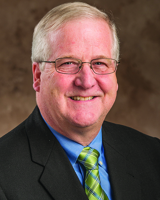 David Closs
David Closs
If David Closs hadn't needed some extra cash in college, he might never have ended up where he is today: as chair of the department of supply chain management at Michigan State University (MSU), as well as the John H. McConnell Chair in Business Administration and founding director of MSU's Midland Research Institute for Value Chain Creation.
While a math and computer science major at MSU, Closs was looking for a part-time job. His father, at that time the director of physical distribution for Dow Corning, "told me to see this guy Don Bowersox, who was looking for computer help," Closs recalls. Bowersox—a professor at MSU and a pioneer in the field of supply chain management—hired him. The rest, as they say, is history. Closs worked with Bowersox for some 40 years, as a quantitative logistician developing simulation and network modeling tools, getting his Ph.D. under his mentor's tutelage, publishing numerous books and academic papers, and working his way up through the academic ranks to become department chair in 2007.
Today, he leads a department that's been ranked number one by U.S. News & World Report for five consecutive years and recently topped Forbes magazine's list of the top 100 supply chain programs worldwide. But Closs was also chosen as a Rainmaker for his leadership style—what his nominators described as "devotion to the department and Michigan State above his own career." Closs, the testimonial said, "inspires others with his personal standards, his ethics, and his determination."
Q: How has MSU's department of supply chain management changed during your tenure, and why?
A: Around 1977 or so, Don and I were in the marketing and logistics department, and there were senior people in operations management and purchasing who appeared to be coming together. So Don got everyone into cross-departmental groups, and they created the materials and logistics management major. That was the first time anybody had put together what would later become "supply chain management."
In 1997, we created a department called "marketing and supply chain management." That worked very well, but in 2007, the marketing people wanted to split off, so we became the department of supply chain management. Many of us would rather have kept it the same way, because today almost all aspects of firms are becoming increasingly integrated, from innovation to product design to putting together marketing plans.
I think we've influenced the practice of supply chain management quite a lot. We're somewhat uniquely positioned at MSU because we have a truly integrated supply chain program. Many institutions separate manufacturing or operations from logistics and sourcing; their faculty look at it as how to optimize a plant, while we look at it as how to optimize the supply chain. I view all of [the functional areas] as ideally integrated together, which is where I think more firms are moving. ... We want to get organizations to think cross-functionally and take an integrated end-to-end supply chain perspective. Then you can really see what the opportunities are to improve performance.
Q: What goals do you have for the department in the future?
A: We're going through a shift toward a focus on value chain integration. I view the value chain as a combination of marketing, supply chain management, packaging, security, and other functions—all of the things we think of when we have to design a new product and then safely get it all the way to the consumer through integrated cross-functional activities. I'm convinced this is the right way for us to go in the future. People who have been trained to think this way will create a competitive advantage for their companies.
I think it's a great opportunity for us. Just as Wharton is strong in finance and Kellogg is good in marketing, MSU will be strong in value chain integration.
Q: Which accomplishment in your career are you most proud of?
A: Working with the Council of Supply Chain Management Professionals (CSCMP) and now with APICS over the years, I have done four major research projects looking at best practices, including the books World Class Logistics: The Challenge of Managing Continuous Change and 21st Century Logistics: Making Supply Chain Integration a Reality. We were able to work with industry to understand the practices being used, and then we put together frameworks and guidelines to help firms improve their operations in a way that reflects sound academic research. This work has influenced a lot of students and businesspeople.
 Mike Fernstrom
Mike Fernstrom
Mike Fernstrom's experience in retail distribution stretches from the realm of hand tools to dog food. Now, you can throw omnichannel retailing into the mix as well. Fernstrom has been with Petco Animal Supplies for the past nine years. During his time at Petco, he has managed both distribution and logistics operations, giving him a unique perspective for his new role as vice president, supply chain e-commerce, systems, and engineering.
Fernstrom is also credited with being the inventor of the "picking sled," which is a horizontal picking cart that Petco uses within its fulfillment modules to cluster pick for up to six stores at a time. Two material handling firms now market the technology commercially.
Prior to joining Petco, Fernstrom spent 10 years at Anderson Consulting, specializing in retail distribution and government systems implementations. He also worked at Sears and Orchard Supply Hardware, which was then a Sears subsidiary, where he served in logistics and distribution roles.
Fernstrom is very involved in mentoring young professionals and is active in the Warehousing Education and Research Council (WERC). He is also an avid road cyclist.
Q: You have a great deal of experience managing retail supply chains. What would you say are the biggest challenges that retail distributors face?
A: There are many challenges, but there are two in particular that I believe are pretty common. First, organizations are always striving to reduce costs. Distribution and transportation operations provide critical services but represent a significant cost to the organization. As leaders, we need to relentlessly identify and pursue productivity improvements and cost take-out opportunities that deliver year-over-year savings driving down the costs for logistics services. Second, the rise of e-commerce both in terms of overall volume and customer expectations is an enormous challenge. Furthermore, omnichannel initiatives—ship-to-store, ship-from-store, same-day delivery, etc.—require significant investment and make execution more complex.
Q: Besides supervising distribution, you also have experience in transportation, e-commerce, and systems engineering. How important is it for supply chain managers today to have experience in those other disciplines and how has that helped you in your own career?
A: It is critically important to have a broad range of experience in different functions. So much of what we do today requires collaboration across multiple supply chain functions in order to drive out cost and/or improve service. For example, making changes to inventory buying practices will affect inventory costs, inbound shipping modes/cost, and DC efficiency and storage utilization. Experience across multiple functions and understanding the systems that support these functions helps you understand the relationships and gives you the skills to work with others to determine the optimal mix to arrive at the cost/service targets.
Q: You have overseen the construction of several distribution operations. Which project stands out to you and why?
A: I have been fortunate to work on three large-scale DC projects. The first two established DC operations within an existing building. The latest project was a greenfield build-to-suit project. I would say the greenfield project stands out for me. There is a lot of satisfaction gained from seeing a dirt field being transformed into a working DC that services both retail and e-commerce customers and employs over 170 people. Personally, I learned about real estate and construction, which were areas new to me. I also enjoyed seeing a number of project workstream leaders really enjoy their roles and appreciate their contributions to the overall project.
Q: What is your proudest personal achievement, and why?
A: I have been credited with the development of horizontal picking carts, which have been in use at Petco for the past five years and have significantly improved productivity and accuracy in our break-pack modules. In truth, the "sled" was developed after I had seen a picking cart used during a DC tour. Working with a small team at Petco, we set out to implement a cart of our own that enables us to cluster pick multiple store orders and significantly reduce travel by our order pickers. We landed on a horizontal cart or "sled" design that enables order pickers to pick six stores at a time and utilizes put-to-light technology to increase accuracy. Working with that small team and achieving results was very satisfying. It also highlights the benefits of getting out and seeing other operations. No matter where I go, I always see something someone else is doing that can be brought back home and implemented.
Q: What advice would you give to a young person just entering the supply chain management profession?
A: Learn as many business functions as you can. Staying in one area and developing deep skills limits your versatility. Managing supply chains requires collaboration across multiple functions. Someone who has worked across multiple functions gains critical perspective to understand the challenges as well as insight into how to solve the problems.
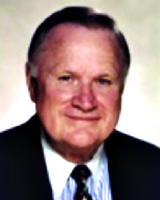 Cliff Lynch
Cliff Lynch
Cliff Lynch is a five-decade man. He cut his transport teeth in the mid-1960s when regulation was part of the firmament and a free market was still years away. He has seen regulation at its peak and through its demise, as well as deregulation during its infancy, adolescence, and into full-fledged adulthood. Simply put, there is little that Lynch has not witnessed.
Q: Of all the things that have changed during the 50 years you've been a practitioner and consultant, is there one that stands out?
A: The [trucking and rail] deregulation acts in 1980 stand out as the most significant. Many who've been in the field just a few years may not realize that all the changes we have seen and continue to see would not have been possible without first eliminating transport regulations. The freedom to negotiate, innovate, and manage your business the way that you wanted to was practically nonexistent during regulation. It all seems like dull history to most practitioners, but I cannot imagine where we would be today had deregulation not taken place.
Q: Most folks around today didn't work through the transition to deregulation. Was there concern at the time that this was the right thing to do, and did anyone forecast that the industry would evolve the way it has in the past 35-plus years?
A: The transition was not an easy one. We were moving out of a 100-year period, with all the bureaucratic mindsets that had accumulated. For many, regulation was a security blanket. Everyone paid the same rates on similar commodities, so you didn't have to worry too much about what the competition was doing. Carriers couldn't go out of business and leave shippers stranded without extensive Interstate Commerce Commission (ICC) hearings and bureaucratic hurdles.
The disagreements weren't so much about right or wrong as they were over matters of interpretation. In my early days at the old Quaker Oats Co., I worked on one proposed rate innovation exclusively for five years, following it all the way through ICC hearings to the U.S. Supreme Court. A good rate clerk was worth his weight in gold back then. Fortunately, there were enough forward thinkers who could imagine what it would be like to join a free market. Even so, it took years of adjustment to get to where we are today.
Q: Has the free-market pendulum swung too far in favor of providers, and will we see some blowback from Washington in terms of either reregulation or brakes on the free-market trend?
A: We could see some government intervention if carriers become too heavy handed. The behavior of the airline industry is a classic example of the practices that led to regulation in the first place—high profits, high rates, and poor service for the only game in town. There is an ongoing issue with the railroads and their treatment of so-called "captive shippers." Some companies have no other mode choice, and we could see some government action if the Surface Transportation Board [the U.S. agency overseeing what's left of rail regulation] believes rates are too high or service is inadequate.
Q: What is the biggest challenge you see facing practitioners, and how do you suggest they prepare for it?
A: The biggest challenge is keeping up with technology while maintaining personal relationships and communications. We have lost so much of our personal face-to-face interaction, and I believe it has worked against us. The technology is great, but I think we must keep talking to each other. We preach collaboration, but to many, that has meant my computer talking to yours. I don't believe we are adequately teaching the concept of person-to-person collaboration to new practitioners, either in the classroom or on the job.
Q: You are in the late innings of your career. With the benefit of historical insight, what advice would you give someone just starting out in the supply chain management profession?
A: We are going to be living with technology. Study it, understand it, and embrace it. At the same time, do not lose sight of how to communicate effectively—not by e-mails and text messages but through face-to-face communication.
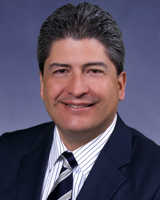 Josué Muñoz
Josué Muñoz
Josué Muñoz came to logistics indirectly, by way of information technology and then customer development. Nearly 25 years ago, armed with a degree in computer and systems engineering, he began working as IT director at a Colgate-Palmolive Co. subsidiary in Colombia. He then moved into customer development at the subsidiary. Within a few years, he was vice president of customer development for Europe and the South Pacific; in 2008, he was named general manager for the Caribbean region.
Since 2010, Mu±oz has served as vice president, global customer service and logistics, for Colgate-Palmolive. In that position, he has headed up a companywide initiative called "Synchronize Demand and Supply - Increasing Supply Chain Flexibility, Reliability and Responsiveness" and overseen the implementation of shared service centers for core supply chain processes.
According to his nominators at the University of Tennessee, Mu±oz "has been an extremely valued member of the University of Tennessee's Global Supply Chain Institute Advisory Board, where he has provided significant direction as our program has risen into ... several different Top 5 rankings lists."
Q: You moved from IT to customer development. Was that a big adjustment? Are there areas of commonality between the job functions?
A: When I take a new role, I first give myself 60 days to listen, observe, and learn from the team. The perspective from outside an area can be very different from the reality once on the inside. So it is better to make sure to understand the complexities of the new area before taking action.
The customer development area is responsible for delivering results every week, month, and quarter. If the sales are not delivered, the organization is put under significant stress. So while there is pressure to deliver results in both IT and customer development (CD), the pace is different.
What is common between IT and CD is the focus on bringing value to the customer. In IT, it's an internal customer; looking at how technology and process together can bring value to the organization. In CD, it's the external customer, in our case retailers, distributors, and wholesalers; developing plans to drive category growth and market-share growth both for them and for Colgate.
Q: How did the initiative to synchronize demand, and your involvement in it, come about? What were the main objectives of that initiative, and the biggest challenges?
A: When I joined the supply chain six years ago, coming from the commercial area, I was given the task of making the supply chain and our commercial areas [marketing and customer development] work as one. That objective drove the company's Synchronize Demand and Supply Initiative. In today's volatile world, our supply chain not only needed to be the best in delivering lower cost, but also had to be agile. We had to make sure our supply chain was focused on our customer. We had to get closer to the shelf, and we had to have the people, processes, and systems in place to be able to respond faster to demand changes without increasing cost.
The team focused on a few sets of KPIs [key performance indicators] that we believed drove synchronization. First was on-shelf availability, which aligns us with our customer's objective and requires that we look at our customer's supply chain and ours as one. Another was leadtime—how do we reduce the time that our plants need to be able to react to demand fluctuations by improving our cycle times, reducing change over time, and reducing minimum run sizes? And finally inventory. Inventory under control is the result of a system that is working in sync.
Our biggest challenge has been technology. We had to ensure that all our processes are run 100 percent within our system and that the system provides us with this end-to-end visibility of the supply chain. Fortunately, we have in SAP a partner that is working with us in co-developing the solutions that are providing the end-to-end visibility, and our teams globally are driving full utilization of our systems in all our supply chain processes.
Q: You have overseen the implementation of shared service centers for core supply chain processes. Can you explain what that's about—who is sharing the service centers and what benefits it brings?
A: As part of a Colgate restructuring, started three years ago, we [expanded] Colgate Business Services [which had started in Europe in 2008, providing financial services in that region]. Today, Colgate Business Services provides services in finance, analytics, and supply chain. It is expanding to other areas.
We leveraged the concept and the structure to centralize order-to-invoice, supply network planning, logistics management [processes] ..., using the structure and concept of a shared business center to create new processes at the center to drive agility and efficiency.
The benefit this brings is that key processes are now run out of three locations globally, allowing for rapid deployment of new technology and the assurance that we are executing with state-of-the-art systems and processes globally. This also frees our local teams on the ground to focus on working with the commercial team in driving supply chain initiatives with our customers and improving the planning of our activities in the market.
Q: Can you tell us a little bit about your work as a member of the University of Tennessee's Global Supply Chain Institute Advisory Board?
A: I believe that the partnership of academia and business is very valuable. The University of Tennessee wants to make sure that it is aligned with the needs of the organizations that will hire its alumni and that the research it pursues is providing value to the business community. My role is to provide the business perspective so that the curriculum is forming the type of professionals the supply chain needs today and tomorrow, and also that the research the Global Supply Chain Institute is working on is aligned with our needs.
 Kevin O'Marah
Kevin O'Marah
Kevin O'Marah believes deeply in the power of supply chain management to solve problems. As a long-time supply chain management consultant and analyst, currently at the firm SCM World and previously with AMR Research and Gartner, O'Marah has spent years helping companies improve their operations by implementing new supply chain technologies and processes.
But the problems that O'Marah believes the supply chain can solve are even grander than helping a company improve its profit-and-loss statement. According to O'Marah, supply chain management holds the key to resolving some of the world's most intractable problems, such as hunger, providing affordable health care, and answering the challenges of climate change. He first pursued these ideas in the book Supply Chain Saves the World, which was published while O'Marah was at AMR Research. He now serves as chief content officer for SCM World, an organization that seeks to turn that vision of leveraging the supply chain to solve world problems into reality.
Q: How did you become interested in conducting research in supply chain management, and why do you continue to be interested in the field?
A: I took a course at Stanford in 1991 called "Integrated Design, Manufacturing, and Marketing," which was jointly taught by the business school and the engineering school. We competed as teams of four (two M.B.A.s and two engineers) designing, prototyping, costing, and marketing a product—can crushers in this case—for a business simulation game. The main takeaway was that integration across functions is the key to value. Ever since then, I've studied economics, business, and technology and have been amazed at how these disciplines intertwine in supply chain management.
In more recent years, I've become aware of how huge an impact all of this can have on the global economy and society. That is why above all else I am motivated by the productivity effects of supply chain management and the way this enables advancement of human society within the bounds of a materially limited planet.
Q: What is your proudest professional achievement, and why?
A: I am especially proud of having created the Supply Chain Top 25 at AMR Research (now Gartner) back in 2004. The Top 25 was not an analytical breakthrough at all but was transformative to the idea that supply chain is a topic that can be exciting and even inspirational. The Top 25 is still an important conceptual artifact and motivator for many senior supply chain leaders today.
Q: SCM World is a bit different from other research organizations in that it explicitly states that its purpose is to help members provide lasting solutions to the world's fundamental challenges. Why is that something that appeals to you personally?
A: Supply Chain Saves the World was the title of a book I put out about 10 years ago. In the last few years at SCM World, we have taken the core ideas underpinning this audacious title and driven hard to make them a reality. Our executive advisory board (EAB) strongly supports this effort and in so doing, brings enormous resources to the quest. Leaders from companies like Chevron, General Mills, Nike, and Caterpillar are included on the EAB and as such, represent massive global footprints for sourcing, manufacturing, and logistics, all of which are increasingly dedicated to doing right in the world.
The critical understanding about supply chain and such mega-global challenges as environmental sustainability, health, and hunger is that all are, at least in part, essentially big engineering challenges. Sustainability, for instance, is all about minimizing material waste, energy inefficiency, and harmful byproducts. Supply chain is the function that cuts the steel, dispatches the trucks, and runs the factories feeding our industrial and consumer economies. As we work to streamline our operations, we simultaneously build a closed-loop system that can and should sustainably meet human needs while assuring availability of resources for the future. Examples include Ikea's move to Better Cotton Initiative-certified cotton, Coca-Cola's watershed management efforts, and Unilever's Zero Waste to Landfill project. All achieved 100 percent success ahead of schedule.
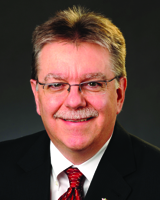 John Salt
John Salt
John Salt is a car guy—one who's wanted to work in materials management and logistics since the age of 12, when he toured the Ford Motor Co. complex in Dearborn, Mich., and was awed by the 1970s-era Mustangs and Cougars that came rolling off the assembly line. Today, Salt is senior vice president for supply chain at Canadian Tire Corp. Ltd., a Toronto-based general retailer with approximately 1,700 retail and gasoline outlets across Canada.
Since stepping into his current role in 2009, he has helped upgrade the company's logistics and transportation systems by implementing new technology such as automated guided vehicles (AGVs), voice picking, and new warehouse management and transportation management systems. His current focus is developing an online fulfillment network to support growth in the e-commerce channel. He was previously Canadian Tire's vice president of distribution, operations planning, and express auto parts, following a career in the consulting and manufacturing industries. Salt holds an M.B.A. from York University in Toronto and a bachelor of technology degree in industrial engineering from Ryerson Polytechnical Institute (also in Toronto).
Q: What's your proudest professional achievement, and why?
A: My proudest moment as a supply chain leader has been to watch the success of the people I've coached and mentored over the years, as they improved the systems that support our supply chain operations and the processes and technology we use in our distribution centers. I'd rather work with our employees and help them take those little kernels of ideas and turn them into meaningful changes than to simply say "Thanks very much, I'll take it from here."
Q: What are some of the biggest changes you've seen during your career?
A: The biggest change has been the rapid pace of technology, and how much computing horsepower has increased. I started at Canadian Tire in 1999, so we didn't have iPhones or BlackBerrys, and the Internet wasn't broadly available. In 2000, we started a program working with one of our third-party logistics service providers (3PLs) to allow online booking of offshore shipments with some of our partners in China. It replaced someone picking up a phone and calling someone else in a shipping office. Nowadays, you'd say it was no big deal, but it took a lot of heavy lifting and work to train them to use it. The power that computers can put in people's hands is just huge.
Q: What hasn't changed?
A: Very early in my career, just a year or two out of school, someone handed me a book. They said, "It's a little dry, but you'll get a lot out of it." That book was Production and Inventory Management in the Computer Age by Oliver Wight. The fundamental tenets of materials management, material requirements planning (MRP), and distribution requirements planning (DRP) were all in there. Today, the speed and power with which you can play with them has changed, but those foundational bits haven't changed at all.
Q: What rules do companies need to break?
A: The notion that there's always one best solution to a problem. These young graduates go through engineering programs, and the theme is that there is always one solution that's better than the rest. But you get into the real world and you realize there are many answers, and sure, some of them are better than others, but over time, you need to settle on the answer that works best with the people and the organization you've got. We had our company's 2016 annual general meeting in May, and our chairman said something that stuck with me: It's more important to get things done than to get things perfect.
Q: What advice would you give someone just starting a career in supply chain management?
A: You need to find the balance between people, process, and technology, and the thing I see is that sometimes the toughest element to get is the people side. So I recommend getting operational experience as early in your career as possible. If you're given a choice between sitting in an office doing analysis on some really neat material or going out and getting experience with people working in a distribution center or a manufacturing plant, go to the DC or the plant. Don't ever pass up the opportunity to work with new people.
 Geoff Turner
Geoff Turner
Property brokers and the federal government are like oil and water. A hard-nosed and fiercely independent bunch, brokers oppose any government involvement beyond ensuring the motor carriers that haul their customers' goods are being operated safely.
Geoff Turner has sampled the oil and the water. Turner started in logistics while in college driving grain and produce trucks over his breaks. He then climbed the shipper and carrier ladders before starting Salisbury, Md.-based Choptank Transport in 2003. Today, Choptank handles more than 150,000 shipments annually with approximately 300 employees. Turner also got involved in the politics of brokerage, serving many years on the board of the Transportation Intermediaries Association (TIA), the industry trade group, and recently completing a two-year stint as TIA chairman.
Q: You are what could be called an old-school broker. Are you concerned about the Uber-broker model, and is there a place for the model even working with, rather than against, traditional brokers?
A: Old school to us means great service, relationships, and personally handling all the issues that may come up during the shipment process. Technology has driven significant efficiencies into our business and will continue to do so. However, we strongly believe that personal communication, and everything that revolves around it, will be the key to our success.
Q: What was your biggest challenge when you started your own firm?
A: When you get started, lots of folks feel the need to tell you what you can't do. My biggest challenge was finding the right team that agreed on what we could do. We executed from there.
Q: As a business owner and former TIA chairman, you have been involved with legislative and regulatory issues that impact your business and those of your peers. Of those, which one is the most potentially damaging to brokers?
A: In today's hyper-regulatory climate, it's hard to pinpoint just one. However, I believe the [FMCSA's Safety Fitness Determination rulemaking, which creates one standard for determining a motor carrier's fitness] to be the most dangerous. If not properly written, the rules will pave a clear road for flawed data to be used by the plaintiff's bar to file more negligent-selection lawsuits against brokers and shippers. We worked hard last year for passage of the "Transportation and Logistics Hiring Reform Act," which would help create a clear standard for hiring motor carriers. Though it failed to pass at the 11th hour, we will continue to work toward getting this measure through Congress.
Q: What is the most significant change in the brokerage field since you entered it?
A: The bar that's been raised on shipper expectations. Brokers with a proven track record of living up to commitments, investing in technology, and focusing on work-force training are being rewarded with consistent business.
Q: What advice would you give to someone, whether they are just starting out in their career or transitioning from another industry, entering the brokerage world?
A: We are in an industry where relationships and personal communication matter. If you take great care of your customers and carriers, and invest in your employees, those relationships will continue to flourish for many years to come.
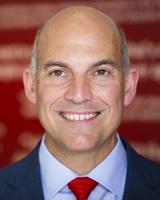 Matthew Waller
Matthew Waller
Matthew A. Waller is a trailblazer. The new dean of the Sam M. Walton College of Business at the University of Arkansas is believed to be the first supply chain educator to be appointed to such a position at a major university. He also holds the prestigious Sam M. Walton Leadership Chair in Business.
A teacher, researcher, and administrator at the Walton College for more than 20 years, Waller became chair of the department of supply chain management when it was established in 2011. Prior to his current appointment, he served as interim associate dean for executive education and as interim dean.
Waller's research focuses on retail supply chains, and he is co-owner of a patent for optimizing inventory and merchandising shelf-space utilization. He is co-editor-in-chief of the Council of Supply Chain Management Professionals' Journal of Business Logistics and co-author of the textbook The Definitive Guide to Inventory Management: Principles and Strategies for the Efficient Flow of Inventory across the Supply Chain.
Q: You're co-author of a forthcoming paper with the intriguing title "Full Steam Ahead: Firms in the U.S. Economy Adjust Inventory for Changes in Transportation But Not the Reverse." What was the paper's main finding?
A: Theory would predict that if inventory becomes more expensive, either because there is more of it or because the opportunity cost is higher, then firms should spend more on transportation to reduce the cost of that inventory. For example, you could use a faster mode or a more reliable carrier. Similarly, if transportation becomes more expensive, you would spend more money on inventory—you might want to ship in bigger quantities or use slower modes, both of which will increase inventory. Our question was, Do firms actually behave optimally in this way? We used 40 or 50 years' worth of data, looking at spending on inventory, transportation, and some other things. What we found was that when transportation costs change, firms adjust their inventory levels, but when inventory costs change, they don't adjust their transportation practices.
Q: Tell us about your efforts to develop supply chain programs at business schools throughout the country.
A: The Association to Advance Collegiate Schools of Business (AACSB) asked us to start something called the Supply Chain Management Curriculum Development Seminar. We've done it for three years now. This year, representatives from about 30 schools came to our campus. Our professors explain their curricula, including how they develop their courses, how they work with industry on projects, and how they fund their programs. We provide online courses if the attendees want, and we'll even give them our curricula, syllabi, tests—whatever they need. We also give them industry contacts.
We don't see other academic institutions as competitors. Very few business schools have supply chain departments. It's not good for us as a country to have business schools graduating M.B.A. students who don't understand supply chains.
Q: Does your supply chain background inform how you carry out your responsibilities as dean?
A: It definitely does. As soon as I became interim dean, I started looking at all of the processes in the college to try to simplify them and make things more efficient. I launched a Six Sigma initiative, and the college staff is getting trained and certified. We've already made lots of improvements. Another thing is that you need cross-functional integration to optimize the supply chain, and I'm trying to bring about more integration within the college. I'm also trying to work more closely with the businesses that are a key part of our programs. In Northwest Arkansas, we have so many supply chain-intensive businesses: Wal-Mart Stores and Tyson Foods, of course, but we also have lots of LTL, truckload, and intermodal companies, like J.B. Hunt, FedEx Freight, and Arkansas Best. I think my supply chain background helps me work with the companies in our area.
Q: What accomplishment in your career are you most proud of?
A: I would say it is the formation of our department of supply chain management. When I first arrived here in 1994, logistics was a subset of the department of marketing. In 2011, we became the seventh academic department in the Walton College of Business, and I was the first department chair. Basically, I created the business plan and sold the idea to the college. It was a hard idea to sell right after the Great Recession. We probably had about 50 to 75 majors in 2011 when we formed the program. As of today, we have over 450 student majors and some of the highest starting salaries in the college.
Related Articles
Copyright ©2024. All Rights ReservedDesign, CMS, Hosting & Web Development :: ePublishing








